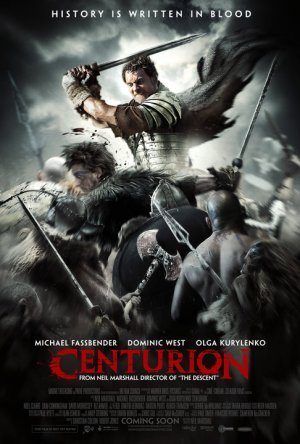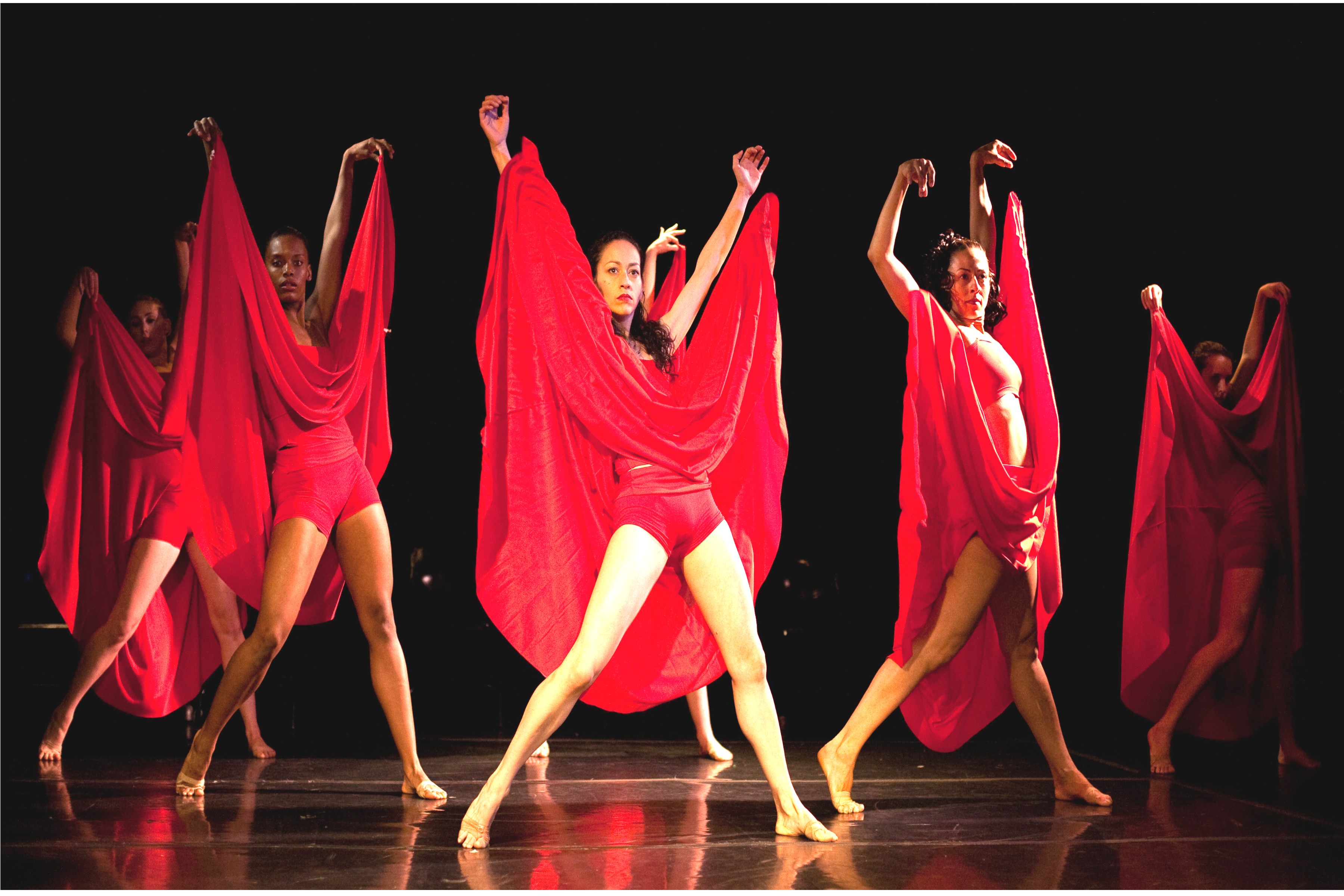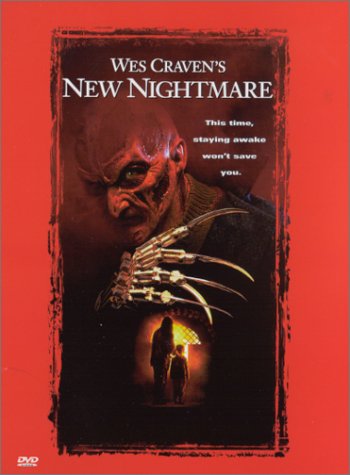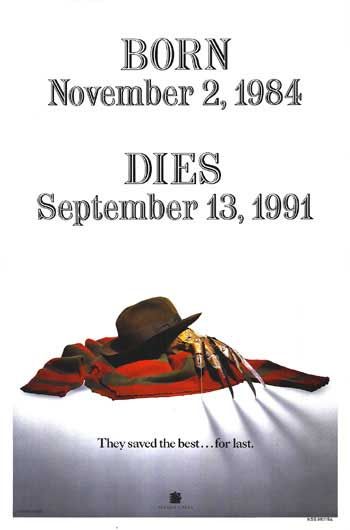Music listings are compiled by Paula Connelly and Cheryl Eddy. Since club life is unpredictable, it’s a good idea to call ahead to confirm bookings and hours. Prices are listed when provided to us. Submit items for the listings at listings@sfbg.com.
WEDNESDAY 25
ROCK/BLUES/HIP-HOP
B Rooster Blues Trio One Bush Plaza, Bush at Sansome; www.peopleinplazas.org. Noon, free.
Bane, Trapped Under Ice, Cruel Hand, Alpha and Omega, Bankrobber Thee Parkside. 8pm, $12.
Blind Willies Union Square, Powell at Geary, SF; www.unionsquarepark.us. 12:30pm, free.
Endroit, Double Plus Good Hemlock Tavern. 9pm, $5.
Entropic Density, Zoo, Saything, Zachary Michael Zinn Knockout. 9pm, $6.
Japonize Elephants, Zoyres, Killbossa Rickshaw Stop. 7:30pm, $10.
Oneida, Jonas Reinhardt, Lights Bottom of the Hill. 9pm, $10.
Thriving Ivory, Ryan Star, Entice Great American Music Hall. 8pm, $17.
Tracorum, Dead Winter Carpenters Café Du Nord. 9pm, $10.
DANCE CLUBS
Booty Call Q-Bar, 456 Castro, SF; www.bootycallwednesdays.com. 9pm. Juanita Moore hosts this dance party, featuring DJ Robot Hustle.
Club Shutter Elbo Room. 10pm, $5. Goth with DJs Nako, Omar, and Justin.
Hands Down! Bar on Church. 9pm, free. With DJs Claksaarb, Mykill, and guests spinning indie, electro, house, and bangers.
Jam Fresh Wednesdays Vessel, 85 Campton, SF; (415) 433-8585. 9:30pm, free. With DJs Slick D, Chris Clouse, Rich Era, Don Lynch, and more spinning top40, mashups, hip hop, and remixes.
Mary-Go-Round Lookout, 3600 16th St, SF; (415) 431-0306. 10pm, $5. A weekly drag show with hosts Cookie Dough, Pollo Del Mar, and Suppositori Spelling.
RedWine Social Dalva. 9pm-2am, free. DJ TophOne and guests spin outernational funk and get drunk.
Respect Wednesdays End Up. 10pm, $5. Rotating DJs Daddy Rolo, Young Fyah, Irie Dole, I-Vier, Sake One, Serg, and more spinning reggae, dancehall, roots, lovers rock, and mash ups.
Synchronize Il Pirata, 2007 16th St, SF; (415) 626-2626. 10pm, free. Psychedelic dance music with DJs Helios, Gatto Matto, Psy Lotus, Intergalactoid, and guests.
THURSDAY 26
ROCK/BLUES/HIP-HOP
Anvil Chorus, Orchid, My Victim Thee Parkside. 9pm, $10.
Bang Data, Funky*C, Los Amnesicos, Basura, DJ Khata Selektor Submission, 2183 Mission, SF; www.kpfa.org. 8pm, $10.
BlackMahal, Boy in the Bubble, Soul Wide World Café Du Nord. 9pm, $10.
Boris, Red Sparowes, Helms Alee Great American Music Hall. 9pm, $18.
Celeste Lear Band, Moving Picture Show Red Devil Lounge. 8pm, $5.
Deep Teens, Moira Scar, Tongue and Teeth, Dawn The Stud. 9pm, $3.
Jason King Band Biscuits and Blues. 8 and 10pm, $15.
Lazer Sword, Rainbow Arabia, Religious Girls, Sister Crayon Rickshaw Stop. 8pm, $14.
Light Asylum, You, Veil Veil Vanish Knockout. 10pm, $6.
Lydia, Fight Fair, Polaris At Noon Bottom of the Hill. 8pm, $10.
Rondo Brothers featuring Foreign Globester, Oona, King Midas in Reverse Slim’s. 8pm, $13.
Royal Baths, Th Mrcy Hot Sprngs, Outlaw, Lilac Hemlock Tavern. 9pm, $6.
Volbeat, Dommin, A New Revolution Independent. 8pm, $16.
DANCE CLUBS
Afrolicious Elbo Room. 9pm, $6. DJs Pleasuremaker and Señor Oz spin Afrobeat, Tropicália, electro, samba, and funk.
Base Vessel, 85 Campton, (415) 433-8585. 9:30pm, $10. With DJs Seth Troxler and Gordon Waze spinning house.
Caribbean Connection Little Baobab, 3388 19th St, SF; (415) 643-3558. 10pm, $3. DJ Stevie B and guests spin reggae, soca, zouk, reggaetón, and more.
Drop the Pressure Underground SF. 6-10pm, free. Electro, house, and datafunk highlight this weekly happy hour.
Gigantic Beauty Bar. 9pm, free. With DJs Eli Glad, Greg J, and White Mike spinning indie, rock, disco, and soul.
Good Foot Som.. 10pm, free. With DJs spinning R&B, Hip hop, classics, and soul.
Gymnasium Matador, 10 Sixth St, SF; (415) 863-4629. 9pm, free. With DJ Violent Vickie and guests spinning electro, hip hop, and disco.
Jivin’ Dirty Disco Butter, 354 11th St., SF; (415) 863-5964. 8pm, free. With DJs spinning disco, funk, and classics.
Koko Puffs Koko Cocktails, 1060 Geary, SF; (415) 885-4788. 10pm, free. Dubby roots reggae and Jamaican funk from rotating DJs.
Mestiza Bollywood Café. 10pm, free. Showcasing progressive Latin and global beats with DJ Juan Data.
Peaches Skylark, 10pm, free. With an all female DJ line up featuring Deeandroid, Lady Fingaz, That Girl, and Umami spinning hip hop.
Popscene 330 Rich. 10pm, $10. Rotating DJs spinning indie, Britpop, electro, new wave, and post-punk.
Solid Thursdays Club Six. 9pm, free. With DJs Daddy Rolo and Tesfa spinning roots, reggae, dancehall, soca, and mashups.
Super Happy Funtime Burlesque DNA Lounge. 7pm, $10. Performance and live music.
Tropicana Madrone Art Bar. 9pm, free. With DJs Don Bustamante, Sr. Saenz, and guests spinning salsa, cumbia, reggaeton, and merengue.
FRIDAY 27
ROCK/BLUES/HIP-HOP
Café R&B Biscuits and Blues. 8 and 10pm, $22.
Cannons and Clouds, Winfred E Eye, By Sunlight Bottom of the Hill. 10pm, $10.
Cap’n Jazz, Abe Vigoda Bimbo’s 365 Club. 9pm, $17.
Flexx Bronco, Spittin’ Cobras, Departed, DJ Ace Thee Parkside. 9pm, $8.
Beres Hammond and the Harmony House Musicians, Inner Circle, Culture feat. Kenyatta Hill Independent. 9pm, $35.
Nekromantix, Howlers, Mutilators Slim’s. 9pm, $15.
Lavay Smith and Her Red Hot Skillet Lickers Red Poppy Art House. 8 and 9:30pm, $15.
Kelley Stoltz, UV Race, Total Control, Young Offenders Hemlock Tavern. 9:30pm, $8.
JAZZ/NEW MUSIC
Aleph Trio Yoshi’s San Francisco. 10pm, $25.
Alhambra Love Songs Yoshi’s San Francisco. 8pm, $28.
Pascal Boker Band Savanna Jazz. 7:30pm, $5.
FOLK/WORLD/COUNTRY
Albino! Elbo Room. 10pm, $10. With DJ David Satori.
Bryan Girard Trio Cliff House, 1090 Point Lobos, SF; (415) 386-3330. 7pm, free.
Culann’s Hounds Plough and Stars. 9pm.
"Old Time Southern Murder Hour" Great American Music Hall. 8:30pm, $14. With the Pine Box Boys, Trainwreck Riders, Good Luck Thrift Store Outfit, and Virgil Shaw.
Red Meat, Total BS, Famous Café Du Nord. 9:30pm, $15.
DANCE CLUBS
Club Dragon Club Eight, 1151 Folsom, SF; www.eightsf.com. 9pm, $8. A gay Asian paradise. Featuring two dance floors playing dance and hip hop, smoking patio, and 2 for 1 drinks before 10pm.
Down to Earth Rickshaw Stop. 10pm, $15. Outer space dance party with DJs Polish Ambassador and Alxndr.
Duniya Dancehall Blue Macaw, 2565 Mission, SF; (415) 920-0577. 10pm, $10. With live performances by Duniya Drum and Dance Co. and DJs dub Snakr and Juan Data spinning bhangra, bollywood, dancehall, African, and more.
Exhale, Fridays Project One Gallery, 251 Rhode Island, SF; (415) 465-2129. 5pm, $5. Happy hour with art, fine food, and music with Vin Sol, King Most, DJ Centipede, and Shane King.
Fat Stack Fridays Koko Cocktails, 1060 Geary, SF; (415) 885-4788. 10pm, free. With rotating DJs B-Cause, Vinnie Esparza, Mr. Robinson, Toph One, and Slopoke.
Fubar Fridays Butter, 354 11th St., SF; (415) 863-5964. 6pm, $5. With DJs spinning retro mashup remixes.
Good Life Fridays Apartment 24, 440 Broadway, SF; (415) 989-3434. 10pm, $10. With DJ Brian spinning hip hop, mashups, and top 40.
Hot Chocolate Milk. 9pm, $5. With DJs Big Fat Frog, Chardmo, DuseRock, and more spinning old and new school funk.
House of Voodoo Medici Lounge, 299 9th St., SF; (415) 501-9162. 9pm, $5. With DJs voodoo and Purgatory spinning goth, deathrock, glam, darkwave indistrial, and 80s.
I Heart the 90s Madrone Art Bar. 9pm, $5. With DJs Samala, Mr. Grant, and Sonny Phono spinning hip hop, dance, alternative, grunge, and more.
Psychedelic Radio Club Six. 9pm, $7. With DJs Kial, Tom No Thing, Megalodon, and Zapruderpedro spinning dubstep, reggae, and electro.
Rockabilly Fridays Jay N Bee Club, 2736 20th St, SF; (415) 824-4190. 9pm, free. With DJs Rockin’ Raul, Oakie Oran, Sergio Iglesias, and Tanoa "Samoa Boy" spinning 50s and 60s Doo Wop, Rockabilly, Bop, Jive, and more.
Some Thing The Stud. 10pm, $7. VivvyAnne Forevermore, Glamamore, and DJ Down-E give you fierce drag shows and afterhours dancing.
Teenage Dance Craze Party Knockout. 10pm, $3. With DJs Sergio Iglesias, Russell Quann, and dX the Funky Gran Paw.
Tocadisco Club Six. 9pm, $15. With DJs Elz and Elise, Mario Dubbz, Doc Martin, Hektor Perez, and more spinning house for Tocadisco’s 5th anniversary.
Trannyshack DNA Lounge. 10pm, $12. Björk tribute with Heklina and more.
SATURDAY 28
ROCK/BLUES/HIP-HOP
Band of Brotherz, Stymie and the Pimp Jones Luv Orchestra Bottom of the Hill. 9:15pm, $10.
Blasphemous Rumours, Luv’n Rockets Café Du Nord. 9:30pm, $12.
Bostich + Fussible, Loquat Independent. 9pm, $17.
Melissa Etheridge Warfield. 9pm, $57.75-102.75.
From Monument to Masses, Judgement Day, Silian Rail Great American Music Hall. 9pm, $15.
Guitar vs. Gravity, Moneypenny, Charmless Hemlock Tavern. 9:30pm, $7.
Hightower, Red Octopus, High and Tight, DJ Blackheart Thee Parkside. 9pm, $5.
Earl Thomas and the Blues Ambassadors Biscuits and Blues. 8 and 10pm, $22.
J Ward, Fujiko-Chan Thee Parkside. 3pm, free.
PROBLEMS, Abrupt Bender’s, 806 S. Van Ness, SF; www.bendersbar.com. 10pm, $5.
Realistic Orchestra Yoshi’s San Francisco. 11:59pm, $20. Michael Jackson tribute.
Shants, Vandella, Not An Airplane, Coyote Girl Hotel Utah. 9pm, $8.
Emily Wells, Valerie Orth, Kindness and Lies Slim’s. 8:30pm, $15.
JAZZ/NEW MUSIC
Al Coster Group Savanna Jazz. 7:30pm, $10.
Cobra Yoshi’s San Francisco. 10pm, $35.
Ralph Carney’s Serious Jass Project Amoeba, 1855 Haight, SF; www.amoeba.com. 2pm, free.
John Zorn and the Rova Saxophone Quartet Yoshi’s San Francisco. 8pm, $30.
FOLK/WORLD/COUNTRY
Gas Men Plough and Stars. 9pm.
La Gente Red Poppy Art House. 9pm, $10-$15.
Orquesta Borinquen The Ramp, 855 Terry Francois, SF; (415) 621-2378. 5pm.
Panteon Rococo, Raskahuele, Bang Data Fillmore. 8pm, $25.
Stellamara Trio, Round Mountain Noe Valley Ministry, 1021 Sanchez, SF; (415) 454-5238. 8:15pm, $17.
Craig Ventresco and Meredith Axelrod Atlas Café. 4pm, free.
DANCE CLUBS
Bar on Church 9pm. Rotating DJs Foxxee, Joseph Lee, Zhaldee, Mark Andrus, and Nuxx.
Barracuda 111 Minna. 9pm, $10. Eclectic 80s music with DJs Damon, Phillie Ocean, and Gabe Gavilanes, plus 80s cult video projections, a laser light show, prom balloons, and 80s inspired fashion.
Bootie DNA Lounge. 9pm, $6-12. Michael Jackson Birthday Tribute with mash-up DJs Adrian and Mysterious D.
Cockblock Rickshaw Stop. 10pm, $7. Homolicious dance party.
4OneFunktion Elbo Room. 10pm, $5-10. Hi-hop with Park, FAME, and DJs B.Cause, Mista B, and Aron.
Future Night Knockout. 9pm, $4. Mashers, bang-ups, and refixes with Djs Danny Glover, Kick, and Pope.
Go Bang! Paradise Lounge. Recreating the diversity and freedom of the 70’s/ 80’s disco nightlife with DJs Said, Carnitas, Brown Amy, Steve Fabus, Sergio, and more.
HYP Club Eight, 1151 Folsom, SF; www.eightsf.com. 10pm, free. Gay and lesbian hip hop party, featuring DJs spinning the newest in the top 40s hip hop and hyphy.
Reggae Gold Club Six. 9pm, $15. With DJs Daddy Rolo, Polo Mo’qz, Tesfa, Serg, and Fuze spinning dancehall and reggae.
Rock City Butter, 354 11th St., SF; (415) 863-5964. 6pm, $5 after 10pm. With DJs spinning party rock.
Spirit Fingers Sessions 330 Ritch. 9pm, free. With DJ Morse Code and live guest performances.
Weekend Warriors Madrone Art Bar. 9:30pm, $5. Live music with Will Blades and O.G.D. and DJs Gordo Cabeza and guests spinning motown.
SUNDAY 29
ROCK/BLUES/HIP-HOP
Dinosaur Bicycle, Red Light Circuit Hemlock Tavern. 9pm, $5.
Emily Greene, Rabbits Running, 7 Orange ABC Hotel Utah. 8pm, $8.
Juliana Theory Independent. 8pm, $25.
Junius, Orbs, Disastroid Bottom of the Hill. 9pm, $10.
Slash, Myles Kennedy, Taking Dawn Warfield. 8pm, $32-40.
FOLK/WORLD/COUNTRY
Cheetahs on the Moon, Everhearts Thee Parkside. 4pm, free.
Forro Brazuca The Ramp, 855 Terry Francois, SF; (415) 621-2378. 5pm.
Jack Gilder, Darcy Noonan, Richard Mandel and friends Plough and Stars. 9pm.
DANCE CLUBS
Anamanaguchi, Minusbaby, Mr. Spastic, Crashfaster, DJ Harbour DNA Lounge. 8pm, $14. Chip music.
DiscoFunk Mashups Cat Club. 10pm, free. House and 70’s music.
Dub Mission Elbo Room. 9pm, $6. Dub, roots, and classic dancehall with DJs Sep, Vinnie Esparza, and guest Adam Twelve.
45Club Knockout. 10pm, free. Funky soul with dX the Funky Gran Paw, Dirty Dishes, and English Steve.
Gloss Sundays Trigger, 2344 Market, SF; (415) 551-CLUB. 7pm. With DJ Hawthorne spinning house, funk, soul, retro, and disco.
Honey Soundsystem Paradise Lounge. 8pm-2am. "Dance floor for dancers – sound system for lovers." Got that?
Jock! Lookout, 3600 16th St, SF; (415) 431-0306. 3pm, $2. This high-energy party raises money for LGBT sports teams.
Kick It Bar on Church. 9pm. Hip-hop with DJ Zax.
Lowbrow Sunday Delirium. 1pm, free. DJ Roost Uno and guests spinning club hip hop, indie, and top 40s.
Religion Bar on Church. 3pm. With DJ Nikita.
Stag AsiaSF. 6pm, $5. Gay bachelor parties are the target demo of this weekly erotic tea dance.
Superbad Sundays Koko Cocktails, 1060 Geary, SF; (415) 885-4788. 10pm, free. With DJs Slopoke, Booker D, and guests spinning blues, oldies, southern soul, and funky 45s.
Swing Out Sundays Rock-It Room. 7pm, free (dance lessons $15). DJ BeBop Burnie spins 20s through 50s swing, jive, and more.
MONDAY 30
ROCK/BLUES/HIP-HOP
Eden Brent Trio Biscuits and Blues. 8 and 10pm, $18.
DANCE CLUBS
Black Gold Koko Cocktails, 1060 Geary, SF; (415) 885-4788. 10pm-2am, free. Senator Soul spins Detroit soul, Motown, New Orleans R&B, and more — all on 45!
Death Guild DNA Lounge. 9:30pm, $3-5. Gothic, industrial, and synthpop with Decay, Joe Radio, and Melting Girl.
Krazy Mondays Beauty Bar. 10pm, free. With DJs Ant-1, $ir-Tipp, Ruby Red I, Lo, and Gelo spinning hip hop.
M.O.M. Madrone Art Bar. 6pm, free. With DJ Gordo Cabeza and guests playing all Motown every Monday.
Manic Mondays Bar on Church. 9pm. Drink 80-cent cosmos with Djs Mark Andrus and Dangerous Dan.
Musik for Your Teeth Revolution Café, 3248 22nd St., SF; (415) 642-0474. 5pm, free. Soul cookin’ happy hour tunes with DJ Antonino Musco.
Network Mondays Azul Lounge, One Tillman Pl, SF; www.inhousetalent.com. 9pm, $5. Hip-hop, R&B, and spoken word open mic, plus featured performers.
Skylarking Skylark. 10pm, free. With resident DJs I & I Vibration, Beatnok, and Mr. Lucky and weekly guest DJs.
TUESDAY 31
ROCK/BLUES/HIP-HOP
Fat Tuesday Band Biscuits and Blues. 8 and 10pm, $15.
Huge Cookies, Adonisaurus Hemlock Tavern. 9pm, $5.
Jason Reeves with Brendan James, Todd Carey Café Du Nord. 8pm, $12.
*Slayer, Megadeth, Testament Cow Palace, 2600 Geneva, SF; www.ticketmaster.com. 7pm, $39.50.
Le Vice, Tim Carr Project Elbo Room. 9pm.
DANCE CLUBS
Alcoholocaust Presents Argus Lounge. 9pm, free. "Stump the Wizard" with DJ Nodrat and DJ the Wizard.
Eclectic Company Skylark, 9pm, free. DJs Tones and Jaybee spin old school hip hop, bass, dub, glitch, and electro.
Kids in America Koko Cocktails, 1060 Geary, SF; (415) 885-4788. 9pm, free. With DJs Fuzzprobe and Bryna spinning 80s.
Share the Love Trigger, 2344 Market, SF; (415) 551-CLUB. 5pm, free. With DJ Pam Hubbuck spinning house.
Womanizer Bar on Church. 9pm. With DJ Nuxx.










